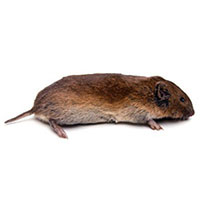Comprehensive Guide to Effective Vole Pest Control: Invasion Identification and Therapy Methods
In the realm of efficient insect control, vole problems position a special challenge that demands a calculated approach. These tiny rodents, commonly incorrect for computer mice, can unleash mayhem on gardens, lawns, and plants if left unchecked. Recognizing the indicators of vole presence and applying targeted treatment techniques are crucial parts of a successful bug management strategy. By checking out the subtleties of vole behavior, recognizing vital signs of problem, and assessing a series of control choices, one can create an extensive strategy to battle these evasive parasites.
Understanding Vole Habits
Vole actions is defined by their delving routines and quick reproduction rates, making them a tough parasite to control properly. These little rodents generally develop complex tunnel systems underground, using them for shelter, food storage space, and transportation. Voles are herbivores, taking in a selection of plants, bulbs, origins, and lawns, which can trigger significant damage to yards, orchards, and yards. Their quick reproductive rate further makes complex control efforts, with females qualified of generating several litters in a solitary year, each having numerous children.
Voles are most active during the morning and evening hours, spending most of their time foraging for food. Their delving behaviors not only interrupt yards and grass but also make them challenging to detect and eliminate. Comprehending vole habits is critical for effective bug control techniques. By recognizing their burrow areas, keeping an eye on feeding areas, and applying targeted control approaches, such as capturing or environment adjustment, vole invasions can be taken care of effectively.
Indicators of Vole Problem
.2403200956550.jpg)
Prevention Techniques
Applying efficient avoidance approaches is critical in reducing vole infestations and guarding vegetation from their devastating feeding practices. To avoid vole problems, it is vital to begin by getting rid of prospective food sources and sanctuary.
On a regular basis examining the property for signs of vole task, such as paths and delve openings, is essential for early detection and punctual action. If vole activity is thought, think about using traps or repellents purposefully positioned near their pathways. Using all-natural killers like owls or snakes can vole control utah also assist maintain vole populaces in check. By carrying out a mix of these avoidance garden enthusiasts, strategies and homeowners can properly secure their vegetation from vole damages.
Non-Lethal Control Techniques
To properly handle vole populaces while focusing on humane methods, non-lethal control techniques provide practical solutions for reducing vole damages in landscapes and gardens. One efficient method is making use of physical barriers such as hardware fabric or cord mesh to shield prone plants. These obstacles can be buried at least 12 inches deep and bent at a 90-degree angle to prevent voles from tunneling beneath. In addition, environment modification can hinder voles by lowering their liked food sources and hiding places. Preserving a well-mowed grass, removing debris, and keeping vegetation trimmed can make the atmosphere much less enticing to voles.

Lethal Control Options
One efficient approach for resolving vole invasions in landscapes and gardens includes the strategic use dangerous control options. When confronted with an extreme vole infestation that non-lethal methods have actually fallen short to contain, implementing deadly control actions ends up being crucial. One generally employed deadly control option is making use of snap catches. These catches are designed to rapidly and humanely eliminate voles upon activation, making them a prominent selection for lots of gardeners and landscapers. To raise the effectiveness of breeze traps, it is recommended to place them in locations where vole task is high, such as along paths or near burrow entries. An additional dangerous control alternative is the usage of harmful lures specifically developed to target voles. These lures have poisonous substance that is consumed by the voles, leading to their eventual demise. Caution must be exercised when making use of poisonous baits to protect against injury to non-target pets or pet dogs. Overall, when utilizing dangerous control options, it is necessary to do so responsibly and based on neighborhood policies to properly manage vole infestations.
Conclusion
To conclude, reliable vole pest control needs an extensive understanding of vole behavior, recognition of signs of invasion, application of avoidance approaches, and usage of both deadly and non-lethal control approaches. By combining these methods, people can effectively take care of vole populations and shield their residential or commercial property from damage. It is very important to resolve vole infestations without delay to stop additional problems and reduce the effect on the surrounding setting.
Given the complex passage systems and quick recreation prices particular of voles, recognizing the indications of vole problem ends up being important in reliable bug control. One of the main indicators of vole presence is the presence of surface area runways or routes in yard or snow, commonly concerning 1-2 inches large, developed as voles travel in between their burrows and food sources.To effectively take care of vole populations while prioritizing humane techniques, non-lethal control techniques supply functional solutions for lowering vole damages in landscapes and yards.One effective approach for dealing with vole invasions in yards and landscapes entails the strategic use of lethal control choices. vole control utah.In conclusion, reliable vole pest control calls for a detailed understanding of vole habits, recognition of signs of infestation, application of avoidance strategies, and use of both non-lethal and deadly control techniques